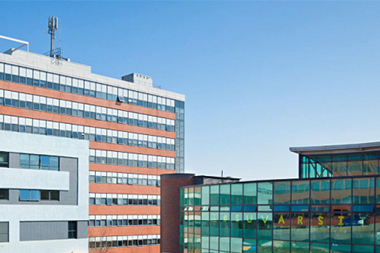Freshers’ week may already be a hazy memory for many students, but for property investors and developers, the party could be set to continue.

This is backed up by UCAS’s recent report that the number of budding academics offered university places has risen by 3% on the last year. In addition, applications to Russell Group universities have shown a continual increase.
The big issue on everyone’s minds, of course, is what the initial Brexit decision and the UK’s slow withdrawal from Europe will mean for demand in the future and whether now is the time to cash in on the favourable yields on offer, coupled with strong institutional demand for purpose-built student accommodation (PBSA).
While it is acknowledged that you rarely become poor by taking a profit, we believe that relative to other property sectors, there are intrinsic qualities that make student housing a defensive secure income asset.
One big positive must surely be the attractive supply/demand dynamic, and the availability of very detailed student number information from most valuation firms.
Continued demand
A recent CBRE report stated that EU students represented only 6% of all full-time students in the UK. We believe that even if there was a “hard Brexit”, continued demand from UK-based students and other internationals would limit the impact on student numbers.
It is also important to consider the factors driving the demand for beds. Even if students decide to take a gap year, in general a university education is something people embark on early in life.
Compare this to a business making a decision about bigger offices, or a family moving to a bigger house. Both of these can easily be deferred until there is less uncertainty about the impact of Brexit.
On top of this, income from student schemes is spread across multiple tenancies, thus reducing the risk of any default. Students (or their parents!) are also regular payers, making the assets very cash generative.

Universities have spent increasing amounts of time coaxing international students to the UK’s shores. With a weaker-than-ever pound, education just got a lot cheaper for them. But even despite this, the UK’s history, language and culture make it an attractive place to study.
We also believe the current low Bank of England interest rate of 0.25% versus a yield of 5.5% to 6% for a well-let scheme in a prime regional city represents a premium return to investors. As an active provider of development finance in this sector, we take significant comfort from these factors.
Instiutional appeal
OK, so what are the pitfalls? We all still need to keep a lookout for the knock-on effects of Brexit.
A reduction in research grants could reduce the attractiveness of UK universities for international students. Similarly, a UK outside the EU could reduce institutional appetite to hold UK assets.
And what about the future of education? If Theresa May’s grammar school plans create a wider divide between those who pursue an academic route and those who are more vocational, we could see a drop-off in numbers.
We all still need to keep a lookout for the knock-on effects of Brexit
And then there’s the cost: £9,000 per year is a lot of money, although the sector has managed to absorb this with student numbers recovering in recent years.
For us, when you add it all up, it seems there are more underlying positives behind much of the sector than there are negatives.
Mark Bladon is co-head of origination at Investec Structured Property Finance































No comments yet